4 Ways to Teach With Wordless Picture Books
By Megan Kelly
 Picture books are no longer relegated to elementary school. Middle school teachers love them because they are accessible to all learners, are a quick way to share a text, and there is a picture book for every topic. My favorites are the books without words.
Picture books are no longer relegated to elementary school. Middle school teachers love them because they are accessible to all learners, are a quick way to share a text, and there is a picture book for every topic. My favorites are the books without words.
When I use wordless picture books in my classroom, I am able to push my students even further, because they are doing all the textual work. I love the freedom and the range of interpretation that these books give my kids.
The books also allow for differentiation: each student is working with the text at their level. The books are accessible to those still learning a skill and afford great challenge and depth to those who can take it further.
There are four main ways that wordless picture books improve my teaching practice.
1. Improve inference skills
Inference is a reading skill that helps students comprehend texts and explore them more deeply. Wordless picture books don’t explicitly explain what is happening, so students need to pay close attention to the illustrations. In discussions, they can explain their inferences using evidence from what they’ve seen.
Many wordless picture books have detailed drawings that invite close inspection. An excellent mentor text for this skill is Boat of Dreams by Rogerio Coelho.
This book has a complicated plot that cannot easily be explained and is ripe for debate. Readers could spend ages creating theories about the plot and using the illustrations to support their ideas.
2. Reinforce vocabulary usage
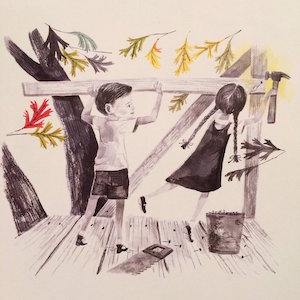
As an extension, you can ask students what illustration they wish was in the book and why. This activity encourages them to continue making connections between the text and their vocabulary words.
3. Inspire descriptive writing
Wordless picture books can jumpstart descriptive writing sessions in your class. If you have students who struggle to create ideas for their writing, the basic frame is already done. With the plot, setting, and characters already created, they can fill in the blanks with beautiful language and dialogue.
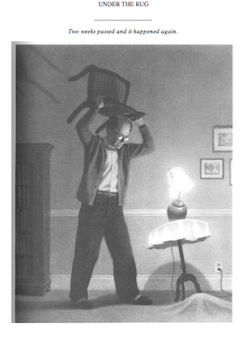
4. Help ELL students build language skills
There are many wordless picture books that English language learners can use to strengthen their growing skills. The best ones can be referred to repeatedly throughout the year, adding details and depth to the discussion. Before After by Anne-Margot Ramstein and Matthias Aregui is a valuable addition to the class library.
It starts with simple two-page spreads (ex. Ingredients and cake) and then progresses to more complex themes (the passage of time, urban development, etc.). This book could be used as a brief introduction to class or a full lesson where the students create their own before and after images and explain them.
Choosing books
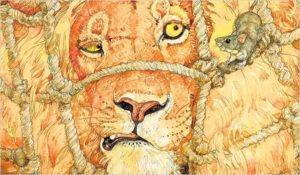
Flotsam by David Wiesner (a multiple Caldecott winner)
Journey trilogy by Aaron Becker
The Lion & the Mouse by Jerry Pinkney
Float by Daniel Miyares
Bluebird by Bob Staake
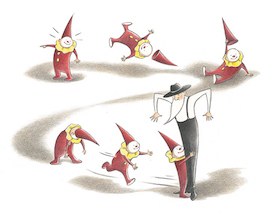
Zoom by Istvan Banyai
Pool by JiHyeon Lee
The Arrival by Shaun Tan
Mirror by Jeannie Baker
Free the Lines by Clayton Junior
Feel free to add suggestions of your own in the Comments!
______________________
Megan Kelly has been teaching internationally since 2003, most recently in Singapore, where she has taught English Language Arts and Social Studies. She has a Master of Arts in Teaching and is passionate about literacy and learning through play. Read all of Megan’s popular posts for MiddleWeb here.

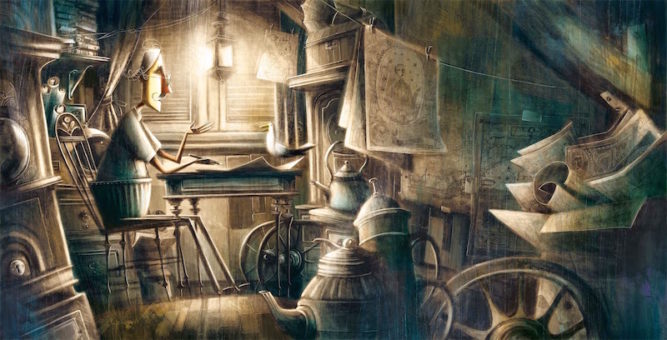


































I love this! I can’t wait to use these ideas (and books) in my classes. Thank for sharing!
This is great, since most middle school-age students think they’re too cool for picture books; I like Black and White by David “Cathedrals” MacAulay: https://www.goodreads.com/book/show/109548.Black_and_White and have seen eighth grade ELA teachers start the year with it, alongside a discussion of what the absolute minimum is to make a story.
What a fantastic article. I will definitely be encorporating wordless books in my future lessons!
I can’t wait to utilize these terrific suggestions! These books look extraordinary. I’m excited to check them out.
Thanks. Crayon is another great wordless book.
Love these ideas. I have been meaning to incorporate wordless picture books in my classrooms since I think you can be very creative with them. I found a small editorial association from Italy that collaborates with modern artists and they have published a variety of books. https://www.lescerises.net
Warm greetings from the Bahamas! I love your description of these books – would have never thought of many of the angles you mention, thank you.
Thank you for a very well written article. How important is to foster imagination, creativity and differentiation in all age groups!
Adding “Before After” to my order list as we speak. I loved seeing how you use simple mentor texts to teach skills before having students apply the same skills to their novels- I’ve been using “Megan’s techniques” a lot this year! PS check out “Shadow” by Suzy Lee for another great wordless picture book.
Awesome ideas Megan! I also love using wordless picture books. Anno’s Journey by Mitsumasa Anno is another great one. Some of the ones you mentioned are new to me so I can’t wait to try them.